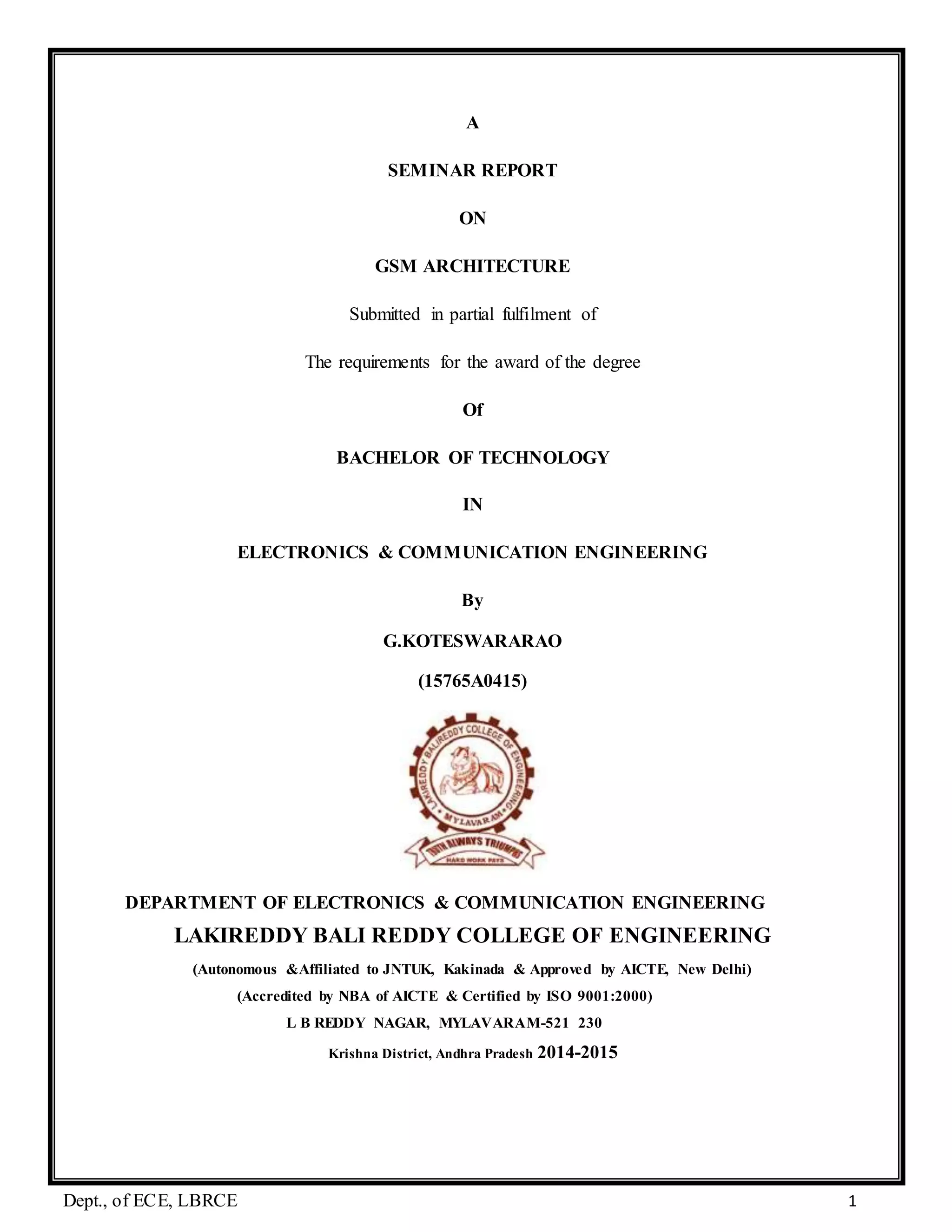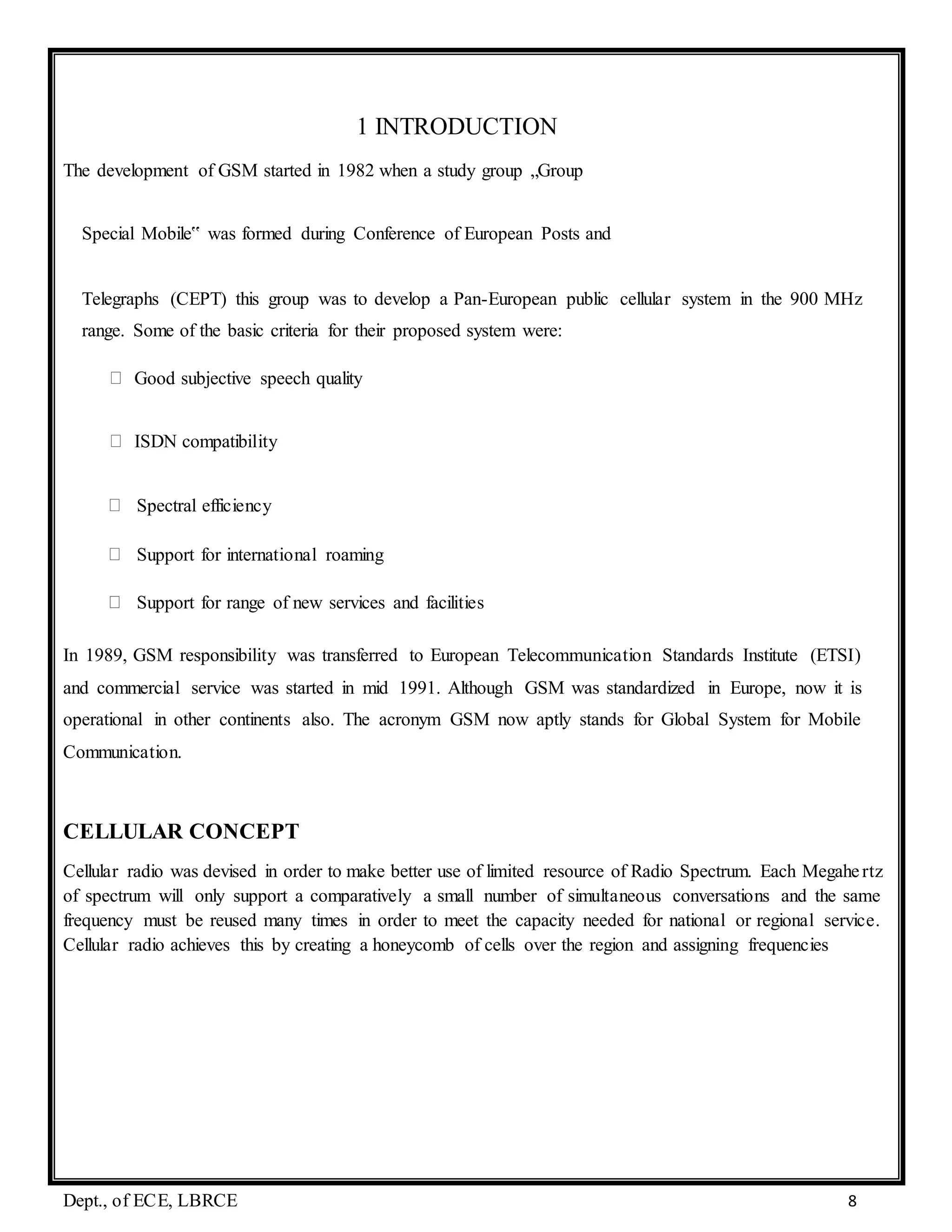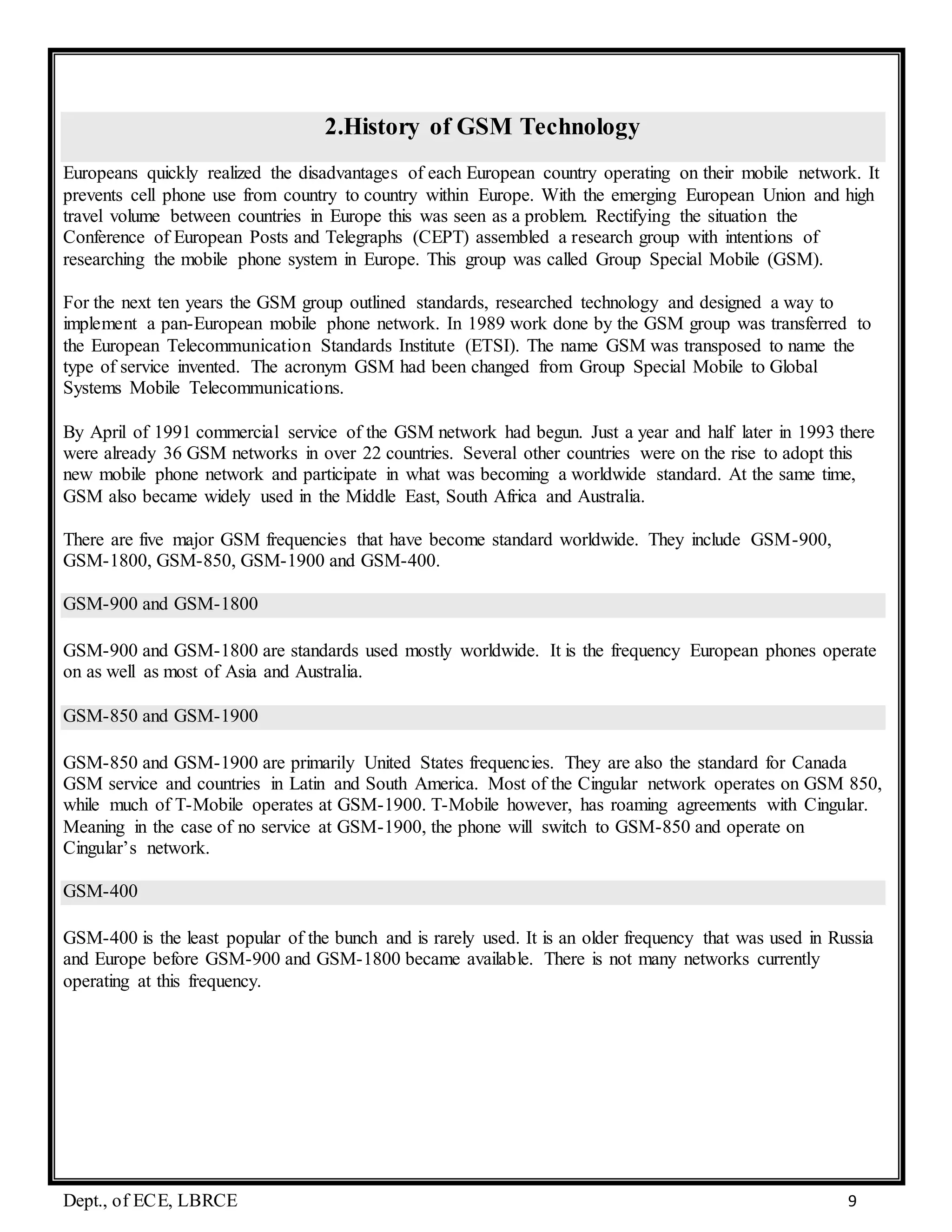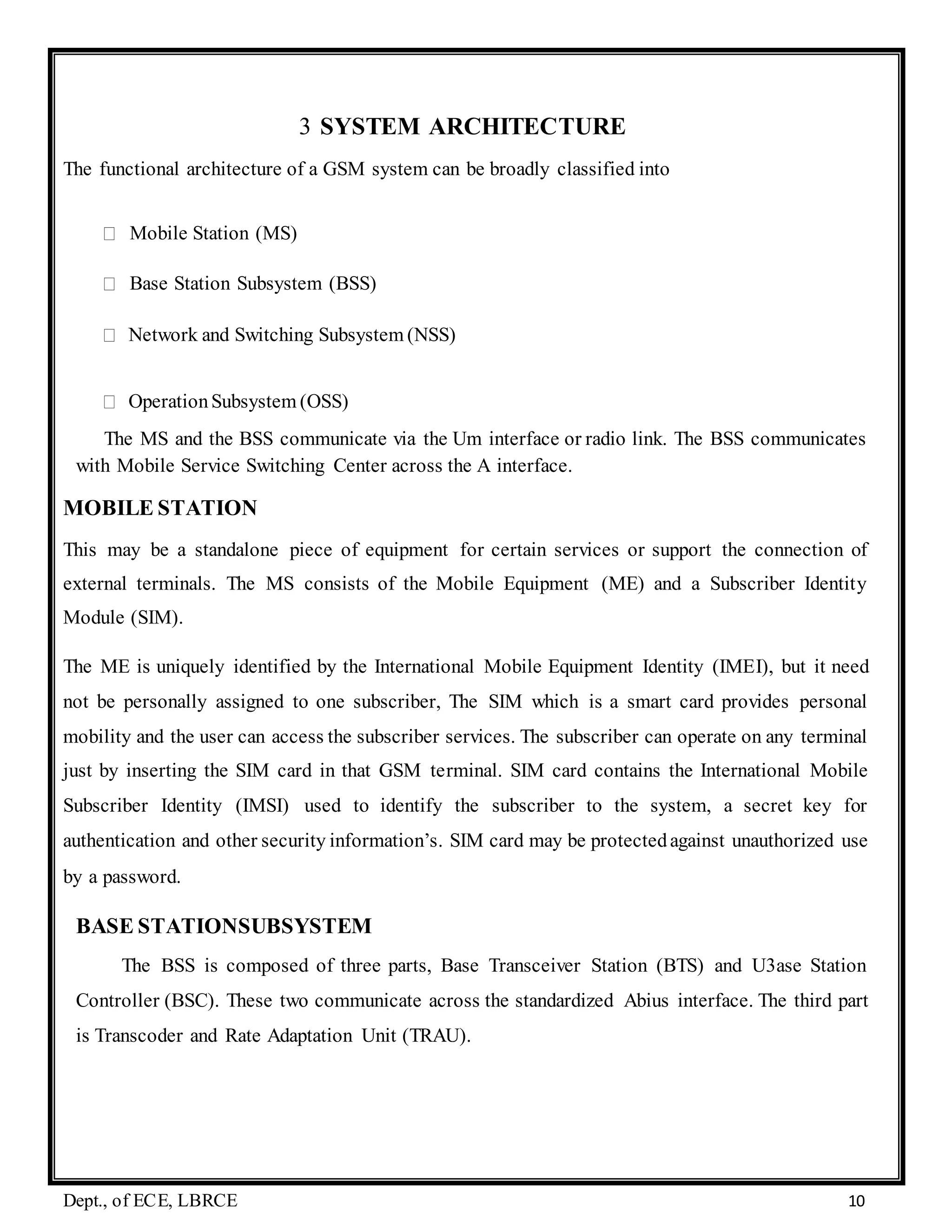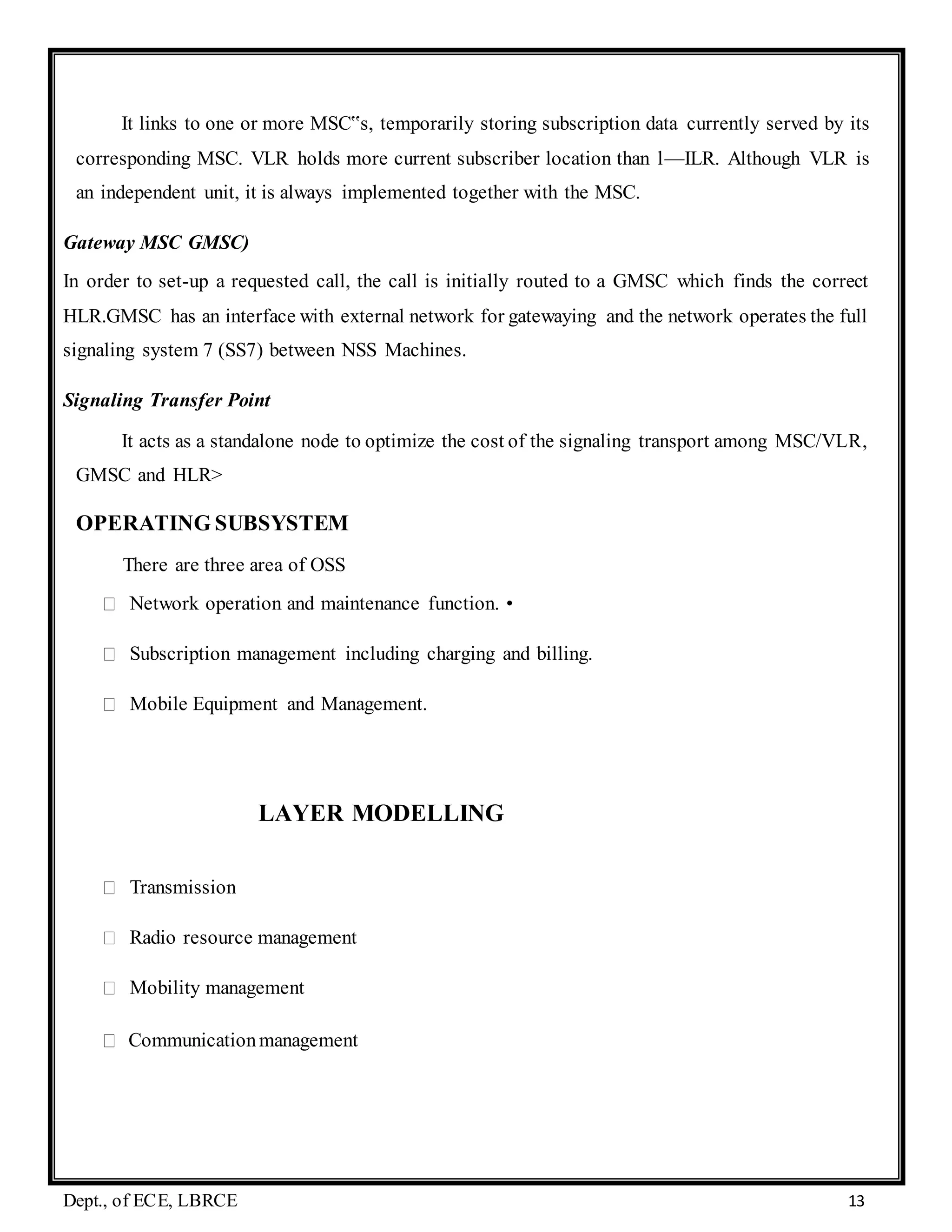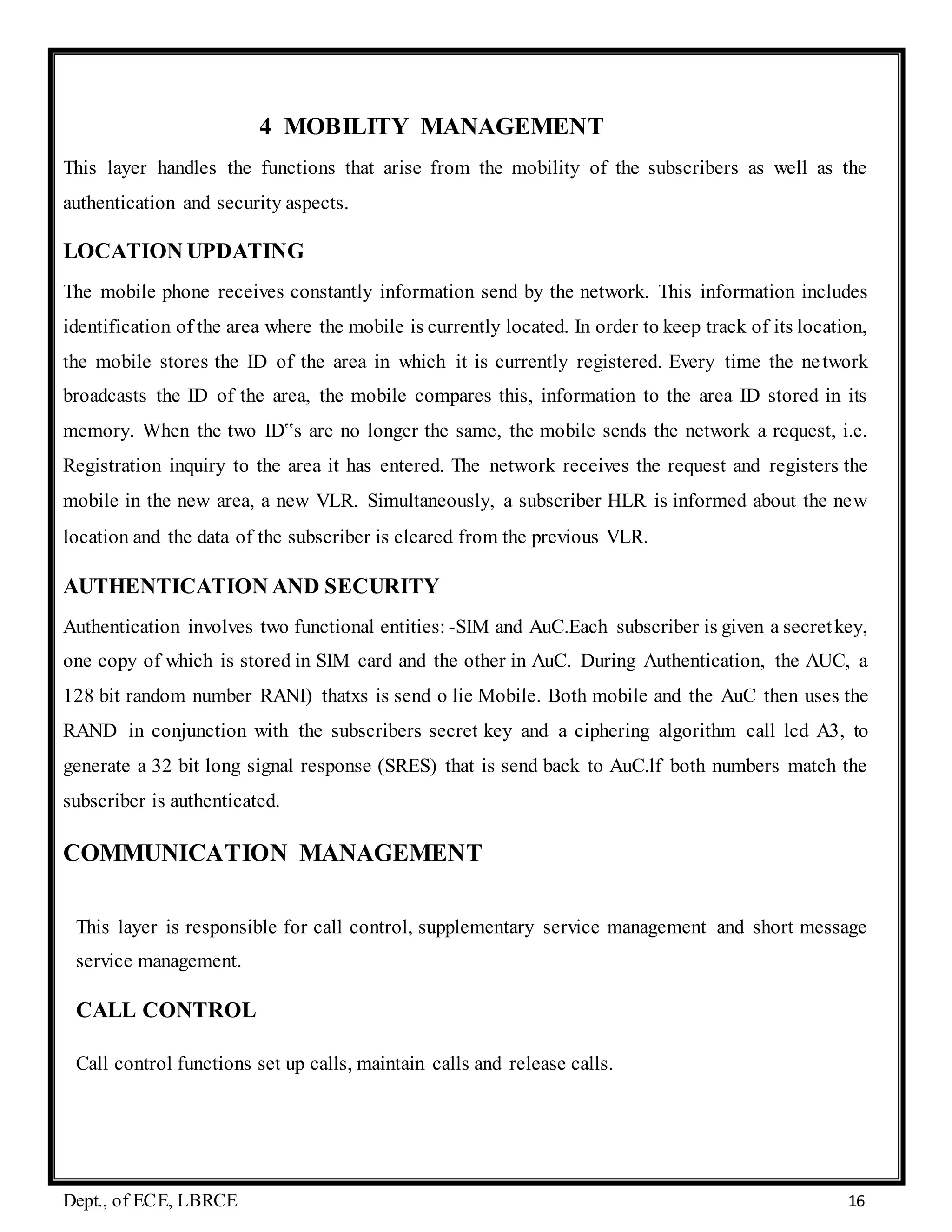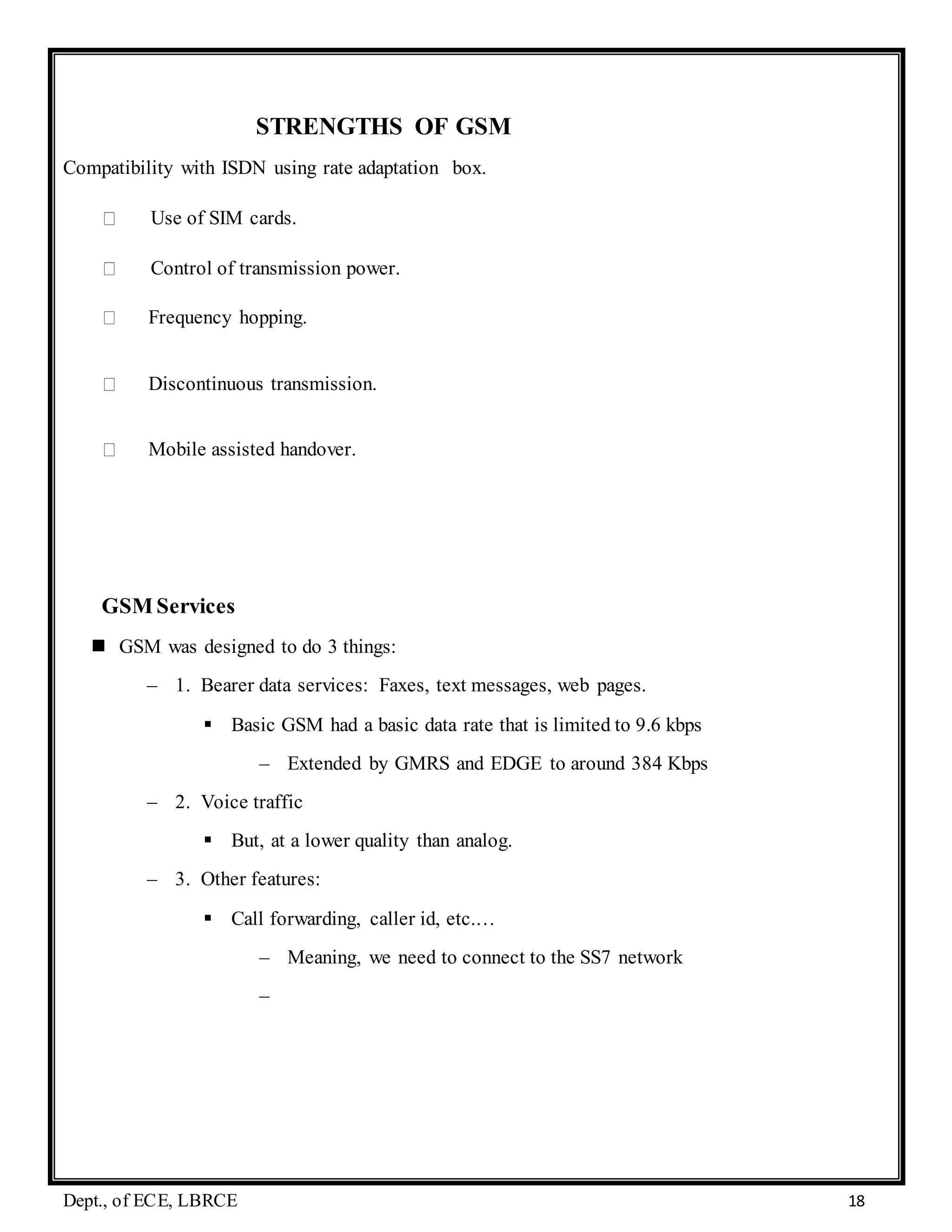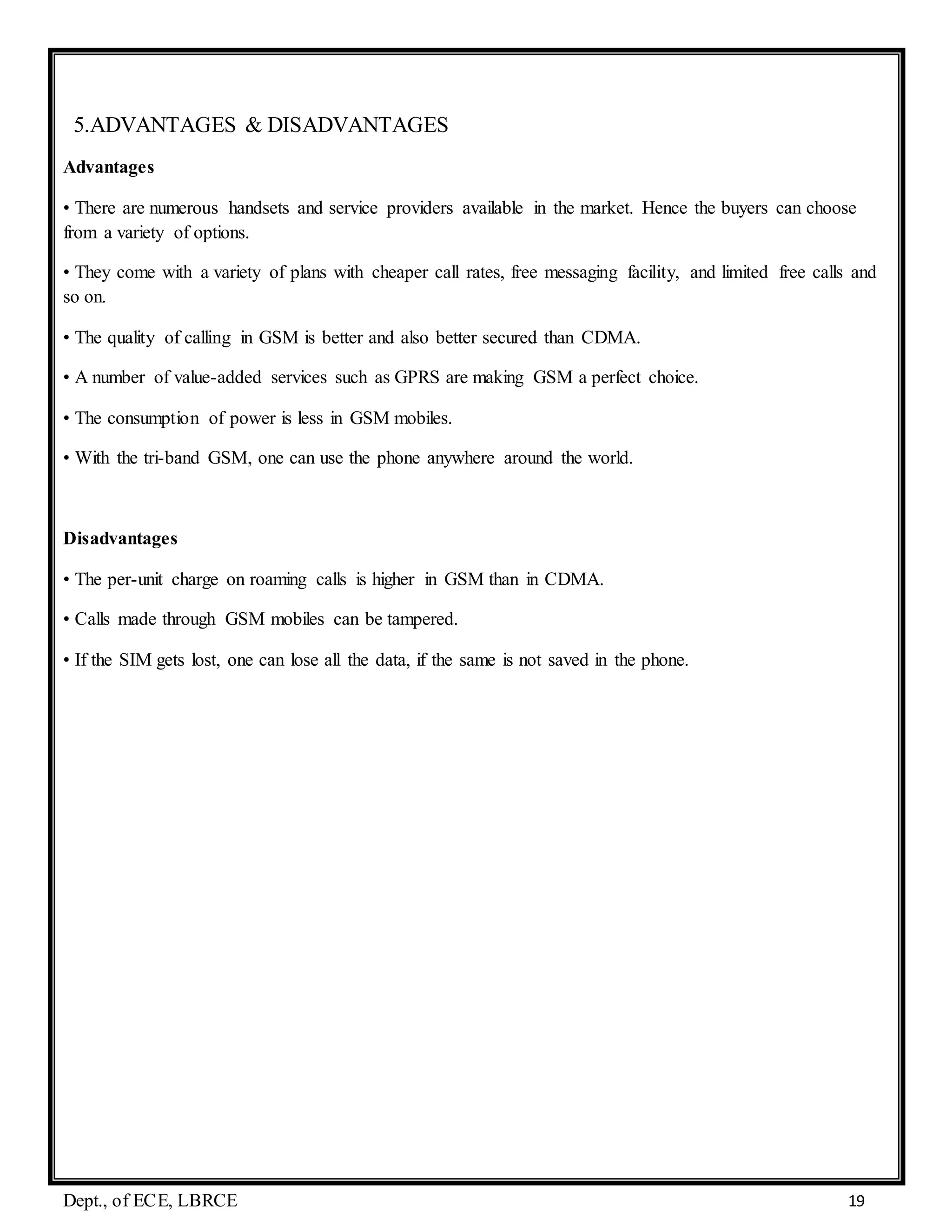This document is a seminar report on GSM architecture submitted by a student, G. Koteswararao, to partially fulfill requirements for a Bachelor of Technology degree in Electronics and Communication Engineering. It includes an abstract, introduction, and sections on the history of GSM technology, GSM system architecture including mobile stations, base station subsystems, network and switching subsystems, and operating subsystems. It also discusses mobility management, traffic and control channels, cell selection, authentication, and call control in GSM networks.
